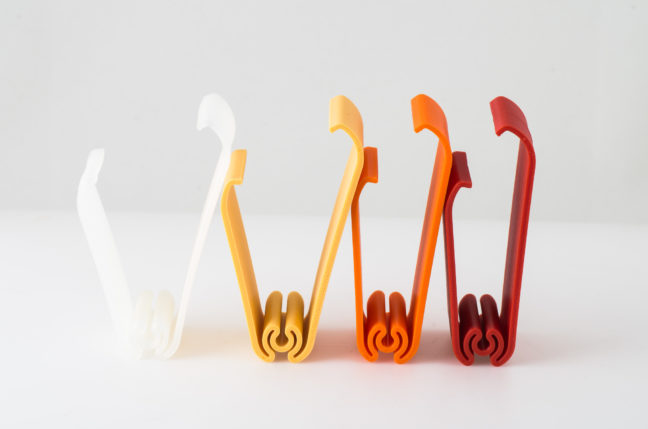
Creep, or deformation, is an effect exhibited in almost every 3D print that undergoes stress.
This property refers to the permanent deformation of a plastic object when mechanical is persistently applied. As you can imagine, different materials exhibit different levels of creep.
For mechanical devices, this is a very important property because it can determine whether a particular material can be used repeatedly in an application. Imagine a clip that is used to hold through the resistance when it’s opened slightly. If the material used exhibited significant creep, the clip would gradually lose its grip and the hold would release.
That is precisely the investigation undertaken by Thrinter’s Walter Hsiao, who attempted to determine the creep properties of three commonly used 3D printer materials, ABS, PLA, and PETG, as well as an unusual material, Alloy 910.

Hsiao designed an interesting smartphone stand using a clip design that depended completely on mechanical stress – and would not function if too much creep occurred.
He designed a test in which the clip holder 3D model would be printed in each material, and then placed under identical mechanical stress conditions.
California-based Hsiao found that each material did present some degree of deformation. His suspicion was that PLA in particular would deform so significantly that it would not be useful for this type of design. However, he found some surprising conclusions:
The amount of creep in the PLA clip wasn’t surprising, that’s what I set out to demonstrate. Neither was the amount of creep in the alloy 910, since I had no intuition about how it would perform. What did surprise me is that the PLA version of the clip, even after a week under tension, still works as designed. I did not expect it have enough clamping force to be useful after a day or two of use. Even from it’s wider starting position, it still clamps with plenty of force since PLA is a very rigid plastic. So there seem to be ways to design around the creep limitations of PLA that I had not anticipated.
I suspect few 3D printer operators go to the lengths accomplished by Hsiao in selecting materials, but in order to make the most functional designs, you must spend effort in selecting the right materials. There’s more to a design than just the 3D model.
Via Thrinter and Thingiverse

